15 Feb 2021 - {{hitsCtrl.values.hits}}
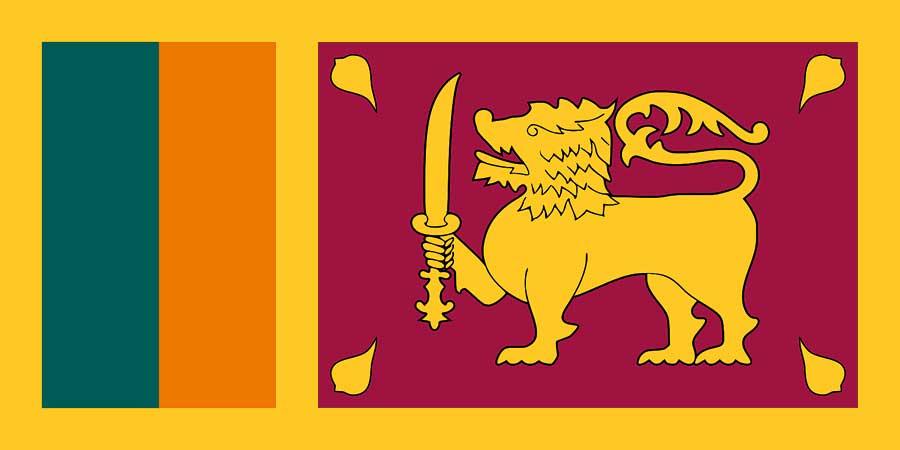
Sri Lanka's national flag with the stripes in front of the lion, representing the two main minorities: the orange representing the Tamils - both the native Sri Lankan Tamils and the Indian origin Tamils of Sri Lanka - and the green representing the Muslims of Sri Lanka.
In 623 B.C., in Kapilavatthu on the Indian borders of present Nepal was born Prince Siddhartha Gautama of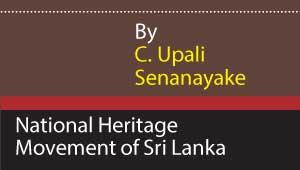 the aristocratic Sakya clan. Brought up in the lap of luxury, the Prince was married at the early age of sixteen to his cousin Princess Yasodhara. However, after having led a sheltered life for many years the Prince was suddenly exposed to sights of old age, disease, death and to that of a dignified hermit. The first three sights convincingly proved to Prince Siddhartha the inexorable nature of life and the universal ailment of human whilst the fourth sight signified the means to overcome the ills of life and to attain calm and peace. These four sights and the realisation that sensual pleasure would only bring transitory happiness served to urge Prince Siddhartha to renounce the world and go in search of Truth and Eternal Peace.
the aristocratic Sakya clan. Brought up in the lap of luxury, the Prince was married at the early age of sixteen to his cousin Princess Yasodhara. However, after having led a sheltered life for many years the Prince was suddenly exposed to sights of old age, disease, death and to that of a dignified hermit. The first three sights convincingly proved to Prince Siddhartha the inexorable nature of life and the universal ailment of human whilst the fourth sight signified the means to overcome the ills of life and to attain calm and peace. These four sights and the realisation that sensual pleasure would only bring transitory happiness served to urge Prince Siddhartha to renounce the world and go in search of Truth and Eternal Peace.
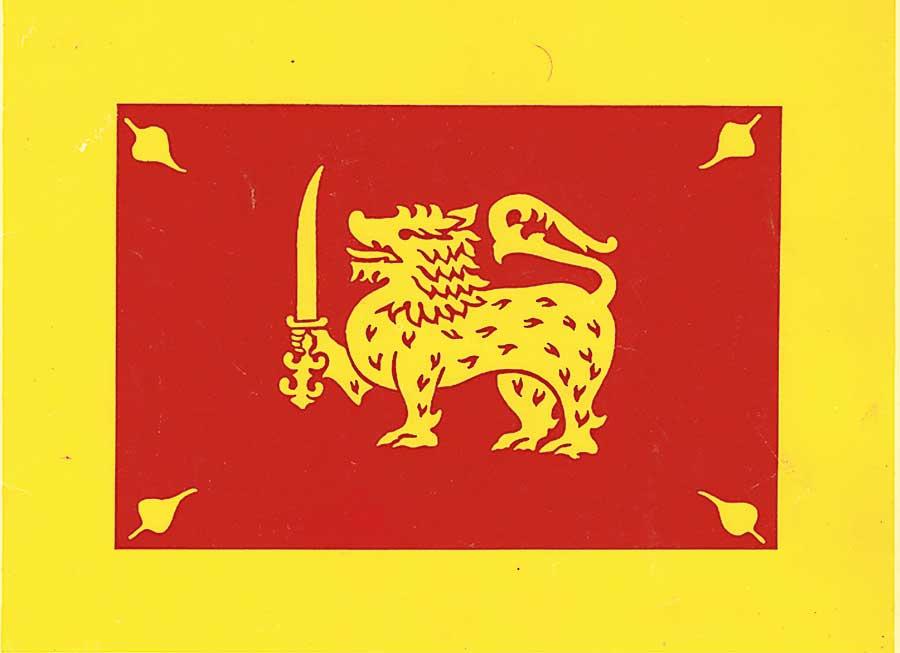
The lion flag
After a stupendous struggle for six strenuous years, the ascetic Gautama, in his thirty-fifth year, unaided and unguided by any supernatural agency became the Buddha-the Englightened One. Relying solely on his own effort and wisdom, the Buddha had eradicated all defilements, ended the process of craving and realised things as they truly were.
Thereafter, the Enlightened One undertook to spread His Doctrine, the Dhamma. Since then the Noble Dhamma has been related and conveyed to mankind, and to Sri Lanka the messenger was Mahinda, the missionary son of Emperor Asoka (3rd century B.C.).
"Arising from the bud are the four petals of the lotus representing the four elements of Earth, Water, Fire and Air"
The Buddha Dhamma has for over 2500 years moulded and fashioned Sri Lankan society to create a distinctive socio-economic system based on religio-cultural values.
The profound concepts and ideals of the Dhamma have been artistically conceived into an unique cultural symbol, the Lion Flag of Sri Lanka. This time honoured standard of Sri Lanka depicts through its many emblems the Living Dhamma .
Introduction
The Lion Flag of Sri Lanka is a symbol of the Buddhist way of life as a means to achieving the end, Liberation. Liberation from greed, fear and delusion and the attainment of benevolence, enlightenment and wisdom. Liberation also from the mundane socio-economic problems of life by the acceptance and practice of the Code of Conduct based on the religio-cultural values.
The Lion Flag of Sri Lanka is depicted in many emblems and is portrayed in two colours yellow and red. Yellow symbolises wisdom of the mind and red is symbolic of lifeblood. The significance of the two colours are artistically woven into the different emblems in the Flag.
The principal emblem comprising the Sword and the Lion upholding it, is set in the centre of a red background contained in the yellow frame of wisdom with the four yellow Bo-leaves at the four corners of the Flag.
The stylised Lion in the principal emblem draws inspiration from the Sakyan Sinhaya, as the Buddha was referred to as the lion of the Sakya clan. The Lion symbolises the animation of nobility, strength and courage in mind and body of the individual and the Nation. The Sword symbolises the instrument of protection. The Sword and the Lion upholding it as the principal emblem depict the strength and courage in mind and body of the individual that upholds life and the values protecting life.
"The acceptance and practice of the Code of Conduct leads to the following of the Noble Eight Fold Path"
The four yellow Bo-leaves represent the four enlightened states of mind: A respect for all life, compassionate action, sympathetic joy and equanimity.
The several emblems depicted in the Lion Flag embody the Right to Live, the Right to Protect and Protection as represented by the Sword; also, the Means to Live, the Path to Liberation and the Attainments of Liberation as represented by the Lion.
* The Bo tree (Ficus Religiose) is the tree under which the Buddha meditated
and attained Enlightenment.
The Sword
The Sword portrayed in yellow is the instrument of protection symbolising the sovereignity of the Right to Live. The Sword is depicted in four distinct sections: the Hilt, the Grip, the Handguard and the Blade symbolising the Right to Live, the Philosophy of the Four Noble Truths, the Right to Protect and Protection respectively.
The Hilt - The Right to Live
The Hilt symbolises the Right to Live. The concept of the Right to Live is based on the Law of Dependent Origination (Paticca Samuppada). "Paticca" means "as having dependence on the combining of conditions" and "Samuppada" means "the arising of states when these conditions combine". The Law of Dependent Origination is the doctrine of conditionality of all physical and psychical phenomena which form the indispensible condition for the real understanding and realisation of the Teachings of the Buddha. It shows the conditionality and dependent nature of that uninterrupted flux of manifold physical and psychical phenomena of existence, conventionally called the Ego, Man or Being.
The physical complex of this Being is composed of the four primary elements or essentials of matter (Paramatthas). The element of solidity - Earth (Pathavi), the element of fluidity- Water (Apo), the element of temperature-Fire (Tejo) and the element of motion and distention-Air (Vayo).
Dependent on the combining of the physical conditions arises the mind or psychical complex.
This psycho-physical complex has Name (Nama) and Form (Rupa), Dependent on the Name and Form of the psycho-physical complex arises the six sense spheres (Salayatana).
Dependent on the Six Sense Spheres arises Contact (Phassa).
Dependent on Contact arises Feeling (Vedana).
Dependent on Feeling arises Craving (Tanha).
Dependent on Craving arises Clinging (Upadana).
Dependent on Clinging arises Birth (Bhava).
Dependent on Birth arises Life (Jati).
Dependent on Life arises Decay, Death, Sorrow, Lamentation, Pain, Grief and Despair (Jara Marana, Soka, Parideva, Dukkha, Domanassa, Upayasa)
Thus does Rebirth and Suffering arise.
Paticca Samuppada is a discourse on the process of Birth and Death. It deals with the cause of Suffering and Rebirth and explains the simple happening of a state dependent on its antecedent state.
"The Hilt symbolising the Right to Live is depicted by" a stylised lotus artistically arranged pointing downwards. The three points in the bud of the lotus symbolises the recurring process of Birth, Life Decay and 'Death"
The Hilt symbolising the Right to Live is depicted by" a stylised lotus artistically arranged pointing downwards. The three points in the bud of the lotus symbolises the recurring process of Birth, Life Decay and 'Death. Arising from the bud are the four petals of the lotus representing the four elements of Earth, Water, Fire and Air. Dependent on the conditioned combining of the elements is formed the body or physical complex. Contained within the physical complex is the mind or psychical complex. The identity of Name and Form of the psycho-physical complex is represented by the two points at the centre of the four petals of the lotus. Embodied in the Name and Form of the psycho-physical complex are the Six Sense Spheres. Arising from the Six Sense Spheres are Contact, Craving and Clinging symbolically depicted by the stem of the lotus. The unbroken line from the bud of the lotus depicts the recurring process of Birth, Life, Decay and Death.
Life being composed of the four elements Earth, Water, Fire and Air is dependent and inter-dependent on them for its existence. Thus, the unhampered access to Earth, Water, Fire and Air is the Right to Live.
The Grip-The Philosophy of the Four Noble Truths (Ariyasacca)
The attachment to Life is portrayed by the Grip of the Lion. The Four Noble Truths (Ariyasacca) are symbolically depicted by each of the four fingers in the Grip of the Lion.
The First Noble Truth-Suffering (Dukkha) means "that which is difficult to endure". Suffering is Birth, Death, Sorrow, Lamentation, Pain, Despair, Separation from what one desires, Association with what one does not desire and Not getting what one desires; all this is suffering.
The Second. Noble Truth is the Origin or the Cause of Suffering (Dukkha Samudaya Ariya Sacca). The cause of Suffering is Craving (Tanha). Craving for sensual pleasures (Kama Tanha); Craving for existence (Bhava Tanha) and Craving for annihilation (Vibhava Tanha).
The Third Noble Truth is the Cessation of Suffering (Dukkha Nirodha Ariya Sacca). The extinction of Craving leads to the extinction of Clinging which in turn leads to the extinction of Birth, Life and Death-Rebirth. Through the extinction of Rebirth, Decay, Death, Sorrow, Lamentation and Despair are extinguished. Thus, comes about the extinction of Suffering. The extinction of Rebirth and Suffering is called Nibbana.
The Fourth Noble Truth is the Truth of the Means to the Cessation of Suffering (Dukkha Nirodha Garnini Patipada Ariya Sacca). It is the Noble Eight Fold Path (Ariyatthangika Magga), the Way that leads to the Cessation of Suffering.
The Handguard-The Right to Protect
The Handguard symbolises the Right to Protect and is portrayed by a crossbar with two quillons on either side. The crossbar represents the System of Trust and the two quillons on either side represent the Extremes. The transient trustee avoids the extremes of Indulgence and Sacrifice and follows the Middle Path (Majjhima patipada). The System ensures the Right to Protect the Right to Live.
The Blade - Protection
The Blade symbolises Protection. Protection is the law practice handed down from generation to generation and refers to the acceptance and practice of the Ten Royal Disciplines (Dasa Raja Dharma) which are based on the social, economic and moral values.
The Ten Royal Disciplines are the duties of a trustee. They are Sharing (Dana) is liberality, generosity and charity.
Morality (Sila) is the avoidance of killing, cheating, stealing, exploiting of others, commiting adultery, uttering falsehoods and the taking of intoxicating drinks.
Recognition of Talent (Pariccaga) is giving credit where it is due, and not taking credit where it is not due.
Integrity (Ajjava) is honesty and being free from fear or favour in the discharge of duties; sincerity and undeceitfulness in one's actions.
Courtesy (Maddava) is kindness and gentleness at all times.
Restraint (Tapa) is leading a simple life and practicing self control.
Non hate (Akkodha) is freedom from hatred, illwill and enmity. Bearing no grudge against anybody.
Non violence (Avihimsa) is the avoidance of all forms of violence, mentally or physically.
Patience (Khanti) is forebearance, tolerance and understanding.
Non revengefulness (Avirodha) is non opposition and non obstruction of measures that are conducive to the welfare of others.
The Ten Royal Disciplines sustain the right to Protect the Right to live.
The Lion
The stylised Lion portrayed in yellow and red symbolises the nobilistic characteristics of strength and courage in mind and body that uphold the values and disciplines of Protection in the Means of Living, the Path to Liberation and the Attainment of Liberation depicted by the several emblems that compose the stylised Lion.
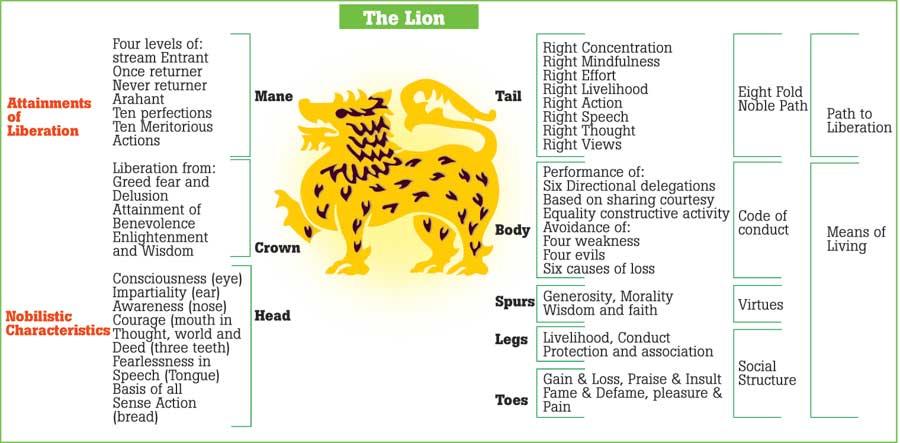
The Means of Living-the social, economic and moral base
The four legs of the stylised Lion represent the four aspects conducive to happiness in the social structure. A Righteous Livelihood (Arakkha Sampada), Moral Conduct (Utthana Sampada), Faithful and Virtuous Friends (Kalyana Mittata) and Living according to one's means (Samajivikata).
Each leg is based on two toes depicting the opposites of the desirable and the undesirable of the Eight Worldly Conditions (Atthalokadhamma). They are Gain (Labha) and Loss (Alabha) in Livelihood; Praise (Pasamsa) and Insult (Ninda) in Conduct; Fame (Yasa) and Defame (Ayasa) in Protection and Pleasure (Sukha) and Pain (Dukkha) in Association.
The spurs on each leg of the stylised Lion symbolise the four virtues. Generosity in Livelihood (Caga); Morality in Conduct (Sila); Wisdom in Protection (Panna) and Faith in Association (Saddha).
Within the social structure in the body of the Lion are twenty four "V" shaped markings that represent the Code of Conduct (Sigalovada Sutta). The arms of each of the "V" shaped markings symbolise Action (Kamma) and Reaction (Vipaka) in the Code of Conduct.
The Code of Conduct comprises the Avoidance (Varitta) of the Four Weaknesses (Satara Agatiya) of Lying, Killing, Lusting and Stealing; the Four Evils (Satara Kamma Klesa) of Fear, Greed, Hate and Delusion; and the Six Causes of Loss (Dhana Vinasha Mukhasaya) of Drunkenness, Idleness, Wastefulness" Indolence, Gambling and Visiting Undesirable Places.
Also, the Performance of the Six Directional Obligations (Sadisa Sanghraya) based on the Four Factors of Good Conduct (Satara Sangraha Vastuva) of Sharing, Courtesy, Equality and Constructive Activity, between
The acceptance and practice of the Code of Conduct leads to the following of the Noble Eight Fold Path.
The Path to Liberation - Moral and Spiritual Disciplines
The tail of the Lion represents the Noble Eight Fold Path to Liberation (Ariyatthangika Magga). The Noble Path is composed of Eight factors and. is depicted by the Eight projections on the tail of the Lion. The Eight factors are Right Understanding (Samma Ditthi). This is the understanding of the Four Noble Truths and the understanding of oneself.
Right Thought (Samma Samkappa) are thoughts that are free from lust, illwill and cruelty. Pure thoughts of selflessness, loving kindness and compassion.
Right Speech (Samma Vaca) deals with speech that refrains from uttering falsehoods, slander, harsh words and frivolous talk. Speech that is pleasant, fruitful and beneficial to others.
Right Action (Samma Kammanta) is action with deals with the abstinence from killing, stealing and sexual misconduct.
"The transient trustee avoids the extremes of Indulgence and Sacrifice and follows the Middle Path (Majjhima patipada). The System ensures the Right to Protect the Right to Live"
Right Livelihood (Samms Ajiva) is a livelihood refraining from trading in weapons. trading in human beings i.e., prostitution, breeding animals for slaughter, trading in intoxicating drinks and trading in poisons.
Right Effort (Samms Vayama) is one's individual effort to discard evil that has already arisen, prevent the arising of unarisen evil, the endeavour to develop unarisen good and the endeavour to promote the good which has already arisen.
Right Mindfulness (Samma Sati) is constantly paying attention to the body, feelings, thoughts and mind objects. Mindfulness on these four objects tend to eradicate misconceptions with regard to desirability, superficial happiness, permanence and ego.
Right Concentration (Samma Samadhi) is the practice of one pointedness of mind which acts as a powerful aid to see things as they truly are by means of penetrative insight.
The arising of the three curves in the tail of the Lion symbolise the three stages of the path; Right Speech, Right Action and Right Livelihood lead to the development of Morality (Sila). Right Effort, Right Mindfulness and 'Right Concentration lead to the development of Concentration (Samadhi). Right Thoughts and Right Understanding lead to the development of Wisdom (Panna).
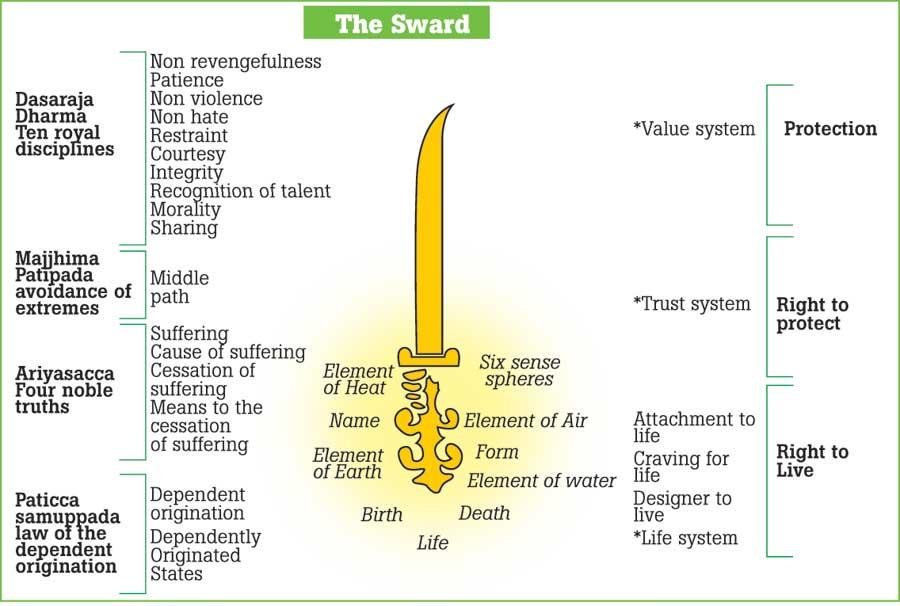
The Attainments of Liberation-Spiritual Attainments
The head of the Lion portrays the Nobilistic characteristics. The Eye symbolises Conciousness through Seeing, the Ear symbolises Impartiality through 'Listening, the Nose symbolises Awareness through Sensing, the Mouth and the three Teeth symbolise Courage in Thought, Word and Deed, the Tongue symbolises fearlessness in Speech and the Beard symbolises the basis of all Sense Action of Mind and Body in Thought and Deed. The mane of the Lion is composed of twenty points.
The first ten of the twenty points in the mane of the Lion represent the Ten Meritorious Actions (Kusala Kamma) and their consequent attainments. Each point depicts a meritorious action and its consequent attainment. They are Generosity (Dana) which yields to the giver more wealth. Morality (Sila) gives birth in noble families and in states of happiness. Meditation (Bhavana) helps to gain higher knowledge and emancipation. Reverence (Apacayana) is the cause for noble parentage. Service (Veyyavacca) produces a large following. Transference of Merit (Pattidana) acts as a cause to give in abundance in future births. Rejoicing in others good actions (Anumodana) is productive of joy wherever one is born. Hearing the Doctrine (Dhamma Savana) and Expounding the Doctrine (Dhammadesana) are both conducive to wisdom. Straightening one's own views (Ditthijjukamma) is conducive to diverse forms of happiness.
The next ten of the twenty points in the mane of the Lion represent the Ten Perfections or Transcendental virtues (Parami). Each point represents a virtue. The virtues are Generosity (Dana) where one gives to others irrespective of caste, creed or colour, seeking nothing for oneself in return. Morality (Sila) is virtuous conduct and discipline. Renunciation (Nekkhamma) is the giving up of worldly pleasures and taking to the life of an ascetic. Wisdom (Panna) is the right understanding of the nature of the world in the light of Impermanence (Anicca), Suffering (Dukkha) and Egolessness (Anatta). Perseverence (Viriya) is the persistent effort to work for the welfare of others. Patience (Khanti) is the patient endurance of suffering inflicted upon oneself by others and forebearance of others wrongs. Truth (Sacca) is sincerity and honesty, harmony in thought, word and deed. Determination (Adhitthana) is the resolute determination to gain Enlightenment. Loving kindness (Metta) is the wish for happiness for all Beings. Equanimity (Upekkha) is discerning justly without attachment or aversion.
The twenty points in the mane of the Lion are arranged in four levels that represent the four stages in the stream that leads to Nibbana. The first level represents the first stage in Sainthood of the "Stream Entrant" (Sotapanna), where one enters the stream that leads to Nibbana for the first time. The second level symbolises the second stage of the "Once Returner" (Sakadagarni) where, one is born only once more in the human realm as he could not attain Nibbana in that birth itself. The third level represents the third stage of Sainthood where one neither returns to this world nor is he born in the celestial realms, but is reborn in a Pure Abode. He is now called a "Never Returner" (Anagami). The fourth level in the mane of the Lion represents the final stage of Sainthood of that of the One who experiences the unutterable Bliss of Nibbana (Arahant).
The crown of the stylised Lion symbolically depicts the Liberation from Greed (Lobha), Fear (Dosa) and Delusion (Moha); also, the Attainment of Benevolence (Alobha), Enlightenment (Nibbana) and Wisdom (Panna) as depicted by the three points of the Lower and Upper sections of the crown respectively.
THE FOUR BO- LEAVES
The four Bo-leaves at the four corners of the Lion Flag represent the four sublime states of mind (Brahma Viharas). They are limitless mental states as these thoughts are radiated towards all Beings without limit or obstruction. They are Loving Kindness (Metta), Compassion (Karuna), Altruistic or Sympathetic Joy (Mudita) and Equanimity (Upekkha).
FRAME OF YELLOW
The frame of yellow in the Lion flag is symbolic of the wisdom of the mind over the body.
"In the Buddha you see clearly a man, simple, devout, lonely, battling for light, a vivid human personality, not a myth. He too gave
a message for mankind universal in character. Many of our best modem ideas are in closest harmony with it. All the miseries and
discontents of life are due, he taught, to selfishness. Before a man can become serene he must cease to live for his senses or himself.
Then he merges into a greater being."
H G. Wells-
Three Greatest Men in History
This article is from the National Heritage Movement of Sri Lanka, published on December 2, 1982
27 Nov 2024 23 minute ago
27 Nov 2024 33 minute ago
27 Nov 2024 37 minute ago
27 Nov 2024 55 minute ago
27 Nov 2024 2 hours ago